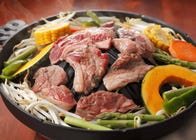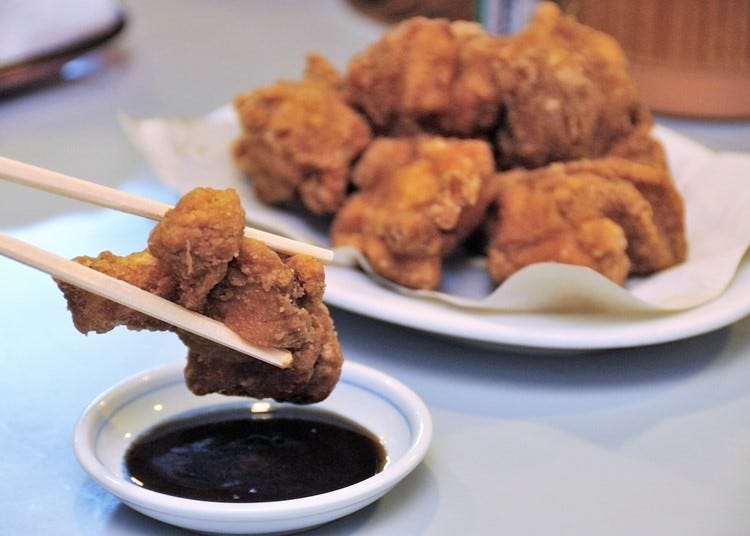
'Zangi' Fried Chicken: Hokkaido's 'Soul Food' & 3 Iconic Restaurants in Kushiro To Enjoy It
- Written by: Nobuka Kawashima
Want to try a classic, local Hokkaido dish? Then you won't want to skip Zangi! Zangi, also known as the 'soul food of Hokkaido', is a Japanese fried chicken dish from eastern Hokkaido's Kushiro City.
But Zangi isn't your average fried chicken. Today we speak to the owner of a specialty Zangi shop, Torimatsu, who tells us everything we've ever wanted to know about Zangi, including its origin, its similarities and differences from karaage and Zantare, and how it became a local specialty.
Finally, we will also introduce three famous Zangi shops that you can visit in Kushiro.
What kind of food is Hokkaido Fried Chicken, Zangi?
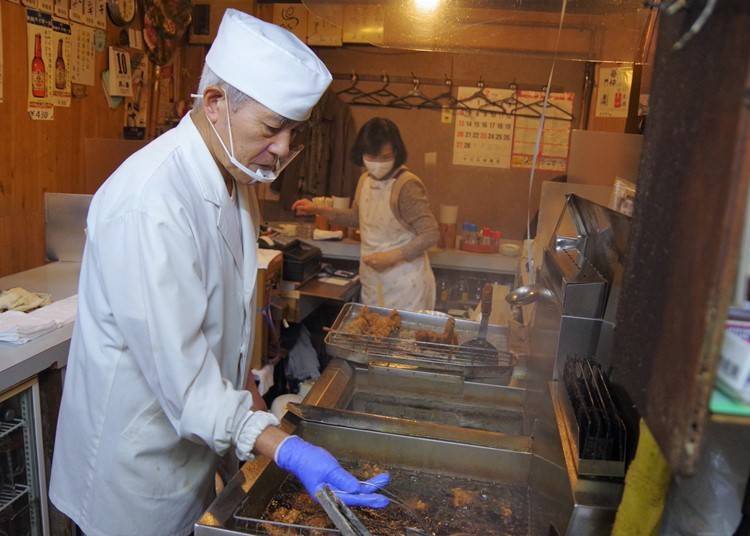
Zangi is a local Hokkaido specialty consisting of fried chicken seasoned with soy sauce and ginger and battered with wheat flour and potato starch. It's a standard menu item at Hokkaido izakayas and set meal shops, and there are even specialty Zangi restaurants.
You'll even find Zangi regularly occupying the deli section of supermarkets. As you can tell, Zangi is a widely popular dish amongst Hokkaido locals, and is often enjoyed for lunch, dinner, and even as a side dish for sake!
Zangi dishes come pre-seasoned and ready to eat as-is, but you can also eat them with sauce. Some Zangi dishes consist of seafood such as octopus and salmon, and meats other than chicken, including venison.
These are also referred to as Zangi; however, the names of the dishes tend to include the name of the ingredients, as well, for example, 'Taco Zangi' and 'Salmon Zangi.'
However, when a dish is simply referred to as 'Zangi,' it generally means it is made with chicken.
What's the difference between Zangi and Karaage?
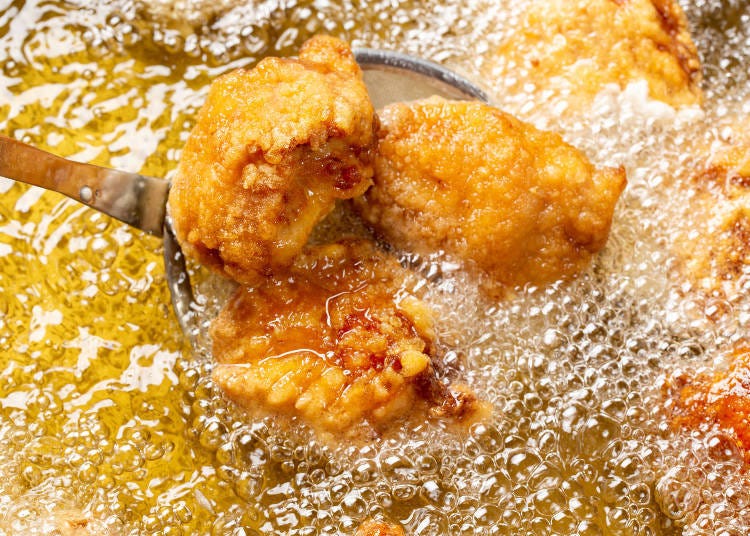
The difference between Zangi and karaage is vague and difficult to understand. But if there's one certain thing, Zangi is always fried chicken. The three main differences between Zangi and karaage are whether the ingredients are seasoned, whether the batter is seasoned, and the main ingredient.
Because Zangi and karaage are so similar, not everyone will recognize the differences right away. Both dishes can use different seasonings depending on the chef and the shop, and the distinction between the two is often ambiguous.
Some Hokkaido restaurants offer Zangi and karaage as separate dishes, while others offer other similar fried food dishes as Zangi.
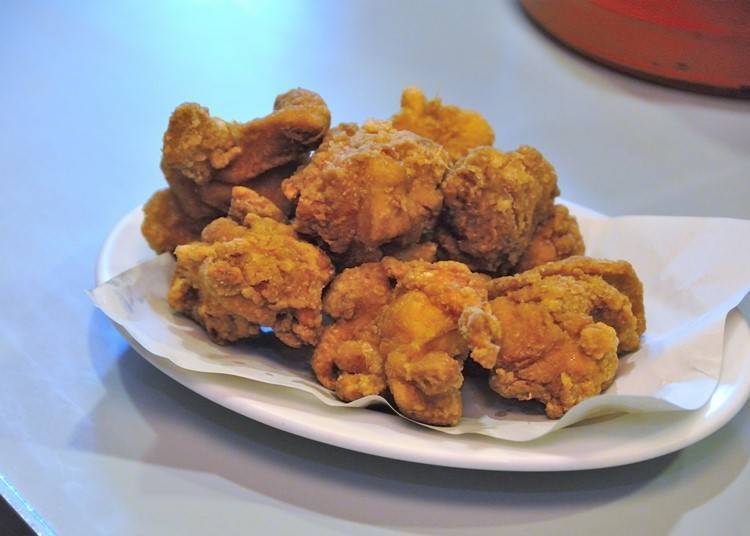
Zangi usually consists of fried, seasoned chicken battered with flour or potato starch. Beaten egg is traditionally added after seasoning. Karaage also uses ingredients such as chicken, and is lightly coated with flour or potato starch and fried in oil.
However, the ingredients can vary between chicken, fish, or vegetables, which may or may not be seasoned before frying. Because karaage can refer to just about anything battered and fried, Zangi can be considered a type of karaage.
On the other hand, regular fried chicken itself is not usually seasoned; instead it is the batter that is usually seasoned before or after frying. Also, as its name implies, the main ingredient is always chicken.
The difference between Zangi and karaage may be a little vague. However, the difference between Zangi and regular fried chicken is clear.
Torimatsu: The birthplace of Zangi
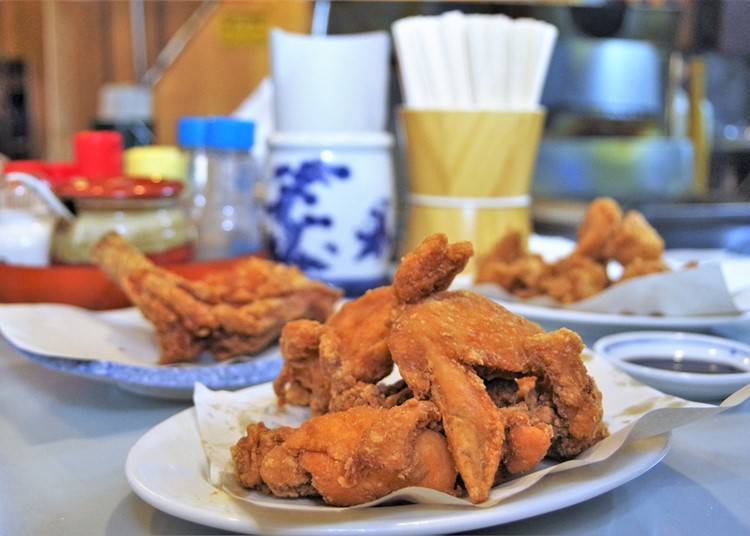
Torimatsu, the birthplace of Zangi, makes its dishes by chopping the chicken, still on the bone, coating it with eggs, salt, and ginger, and battering it with flour. The chopped, bone-in chicken pieces are a mix of thigh meat and chicken wings.
The seasoning is mild and not too salty, allowing you to savor the flavor of the meat. Boneless Zangi is a separate dish on the menu. It is cooked in exactly the same way as regular Zangi, but uses boneless chicken thighs instead.
At Torimatsu, Zangi is made with various parts of bone-in chicken, while Boneless Zangi uses boneless thigh meat.

Aside from Zangi, Torimatsu also sells each part of the chicken as its own separate dish, including Fried Chicken Wings and Fried Thigh Meat. These dishes are seasoned with salt, coated with potato starch, and fried without eggs.
Compared to Zangi, these pieces are a little meatier, mildly salty, and pack a crunch. While we can't reveal the specific ingredients used to flavor the Zangi and fried chicken, we can say that each dish is cooked with different seasonings.
If you want to learn the secrets, you'll just have to visit Kushiro City and taste them for yourself!
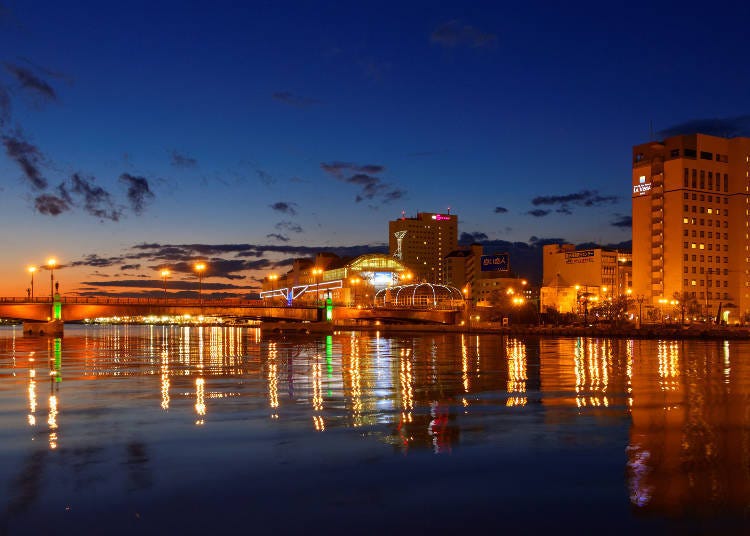
What is Zantare? How is it different from Zangi?
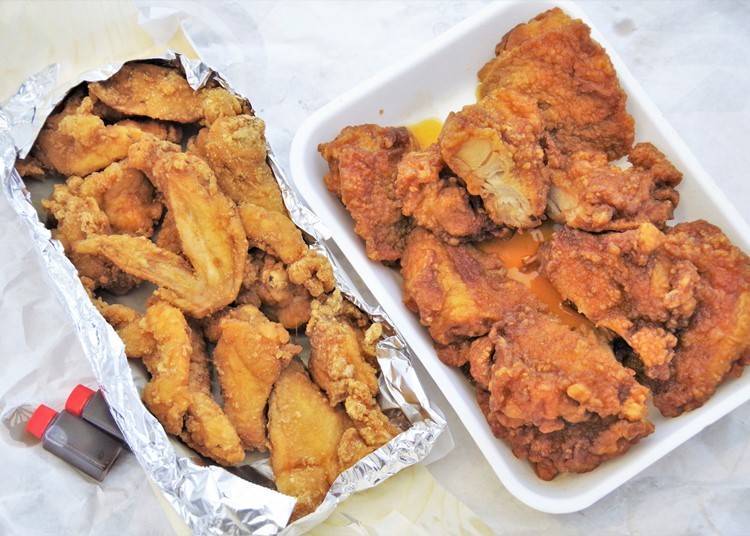
Another fried food dish similar to Zangi is Zantare. It's an evolution of Zangi, made with a sweet and spicy sauce.
Like Zangi, Zantare was born in Kushiro, from which it expanded from local Kushiro shops to various parts of Hokkaido.
Compared to Zangi, which is widely available all throughout Hokkaido, Zantare is a little harder to find. However, like Zangi, Zantare is a standard menu item at meal set shops and izakayas.
The flavor of the sauce varies from shop to shop. In addition to the standard sweet and sour sauce, there are also spicy sauces, and sauces similar to salad dressings.
The birth of Zangi and how it became a Hokkaido specialty

Zangi was born around 1960. It all began at Torimatsu, which was a Kushiro yakitori (grilled chicken skewers) restaurant at the time.
After getting a sales offer for food-grade broilers, they bought a whole chicken, chopped it up, seasoned it, and fried it.
The dish became an instant hit. They eventually stopped offering yakitori and became a fried chicken specialty shop. But now, their new fried chicken dish needed a name.
Taking the Chinese word for fried chicken, 'zagi,' and adding an 'n' for good luck ('n' sounds like '運,' the Japanese word for luck), they named it Zangi, and a new dish was born.
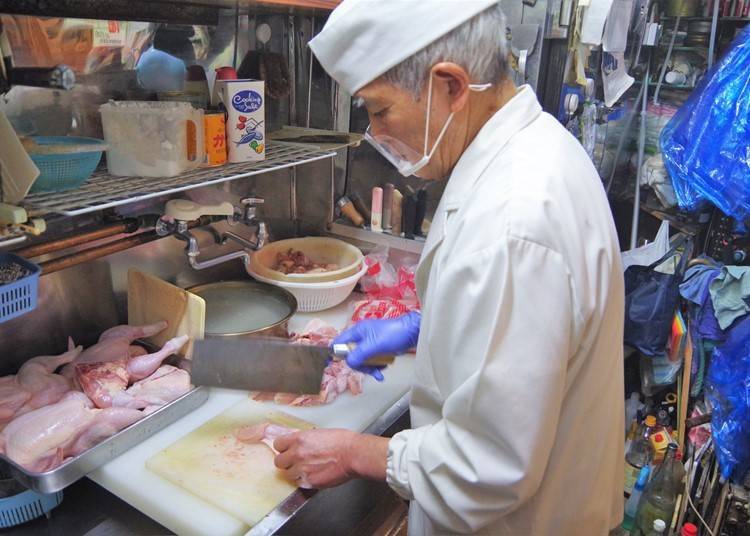
Soon after, an employee who had been training in Torimatsu opened his own independent branch in the neighborhood specializing in Zangi.
Soon, Zangi shops popped up all over Kushiro City, eventually spreading to various parts of Hokkaido, including Sapporo City.
However, cooking and serving chicken pieces on the bone took time. Also, the varying sizes of each piece of meat often resulted in inconsistent serving sizes.
As Zangi became more and more popular, shops began to turn to boneless chicken thighs, which they could prepare in the same way as the original, but with much more ease and in far less time.
New Zangi dishes also began to appear one after another, using local ingredients unique to Hokkaido, including seafood like octopus and salmon.
Many believe Zangi spread so quickly throughout Hokkaido because of how easy it was to cook it and the variety of familiar ingredients one could use.
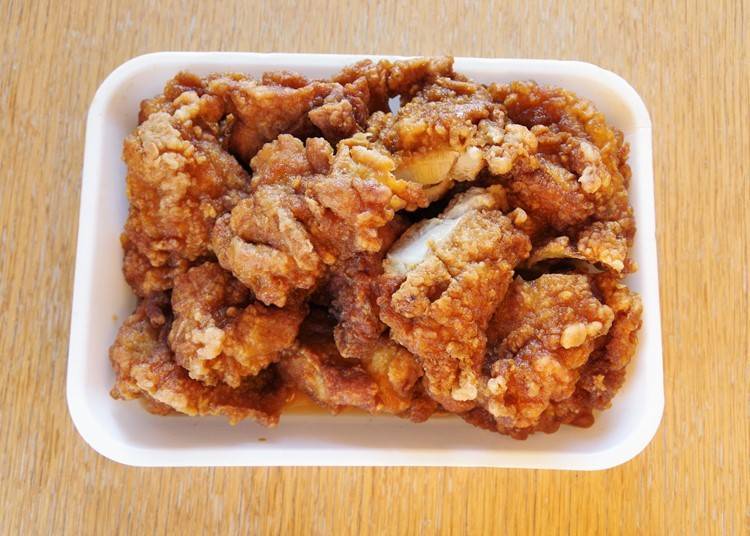
Zantare appeared in 1980, nearly 20 years after the birth of Zangi, as an evolution of the dish. It all began at a shop called Nambantei, located near the Kushiro Marsh in the Ramsar Convention Wetlands (located in downtown Kushiro City at the time).
Seeking to create a hearty dish they could serve to Kushiro's ice hockey players, they began to offer a banquet course that included generous amounts of Kushiro's popular Zangi, drizzled with sweet and sour sauce.
Customers began to ask for the dish by name. And so it was dubbed 'Zantare,' a combination of the words Zangi and sauce (tare). Once the shop began offering it as a set meal and take-out item, they hit their big break.
Shops offering similar dishes increased exponentially both inside and outside Kushiro City, and, together with Zangi, spread to various parts of Hokkaido.
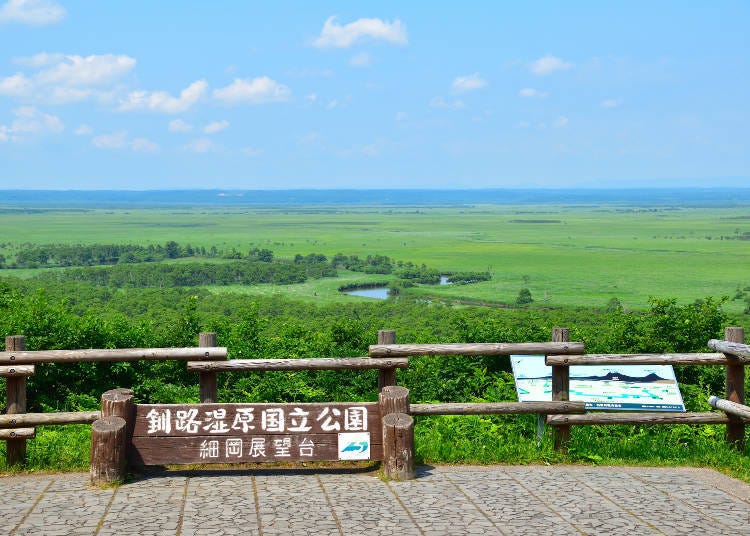
Famous Shop 1: Torimatsu - The traditional flavor of original Zangi
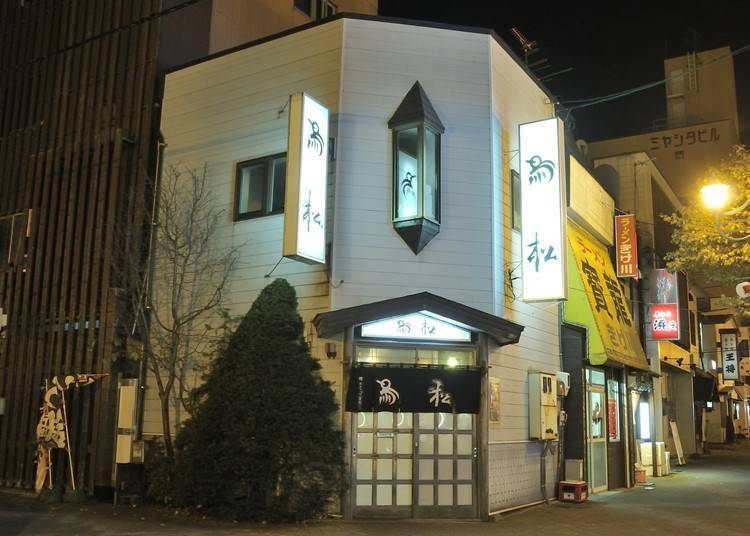
Torimatsu is a long-established Zangi shop, located about 13 minutes from JR Kushiro Station and 5 minutes from the famous Nusamai Bridge.
Locals and tourists alike flock to the shop every evening from the moment it opens its doors, so it tends to get packed pretty quickly. Luckily, take-out is also available, so if you can't sit down in the shop, you can take your meal back to your hotel room!
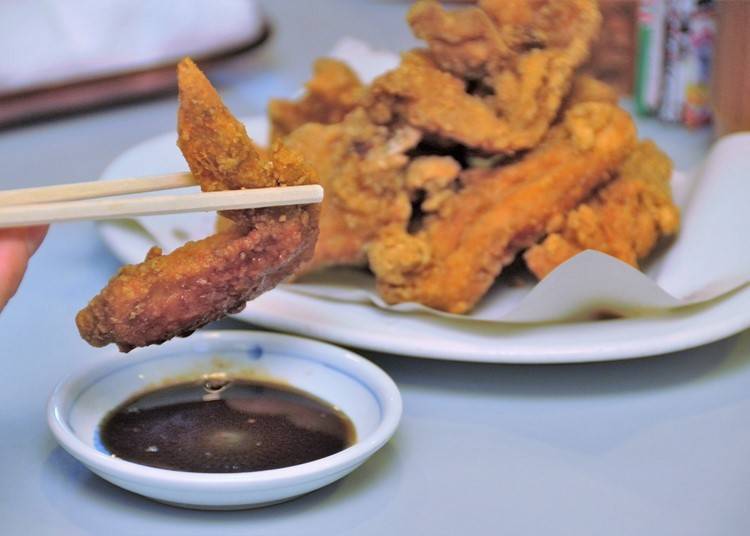
The chicken is already flavored with a salt-based seasoning. However, the proper way to eat Zangi is to dip the crispy, fried, bone-in chicken into the special sauce.
The sauce is a secret recipe developed by the previous owner after repeated research that involved tasting and comparing various sauces and seasonings all around Japan. It is a secret recipe that has only been passed down to the current second-generation shop owner.
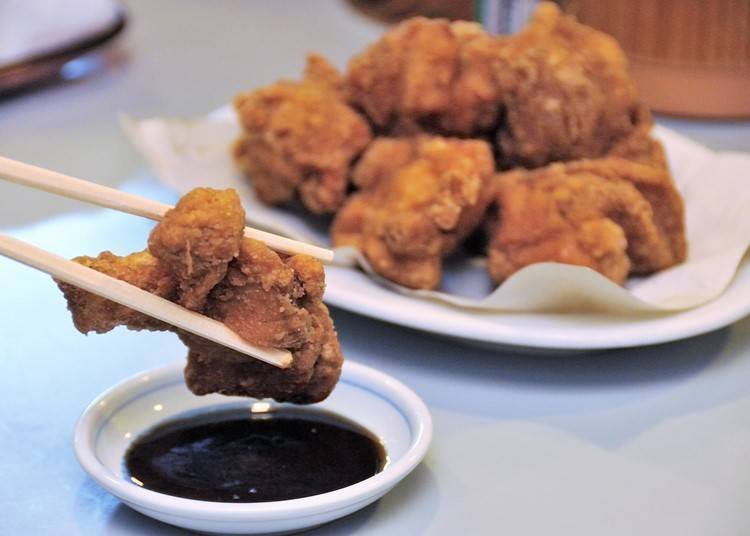
Each table is set with a jar of secret sauce, as well as salt, pepper, and chili pepper so that you can spice up your meal to your liking. Enjoy it as-is, or compare the other sauces and ingredients. You can also add a dash of pepper to the sauce itself!
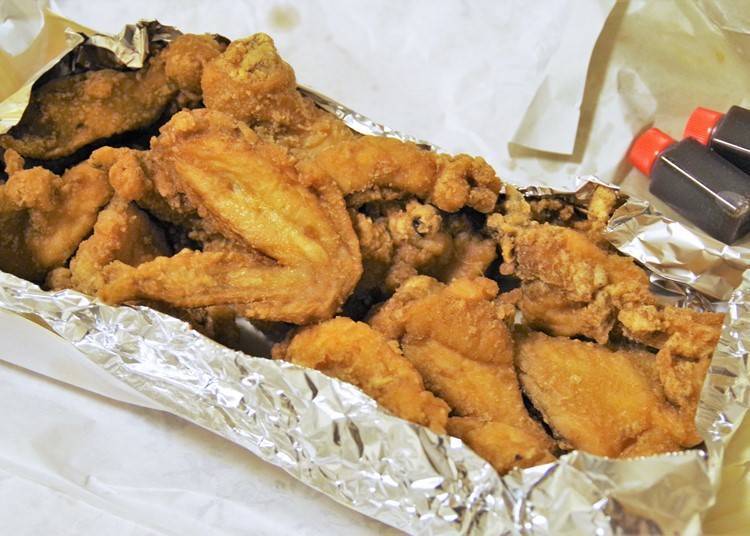
While there are currently no foreign language menus available, the shop is popular with tourists. The majority of visitors come for the Zangi. Be sure to tell the staff whether you want it with or without bones when you order!
As a specialty fried chicken shop, there aren't many other dishes besides fried chicken. However, feel free to enjoy your traditional Zangi with draft beer, highball, or sake.
-
Torimatsu鳥松
- Address 1-3,Sakae, Kushiro, Hokkaido 085-0013
- Phone Number 0154-22-9761
・Hours: 5 PM - 12:30 AM
・Closed: Sundays
Famous Shop 2: Nambantei - You'll want to visit this original Zantare shop on an empty stomach!
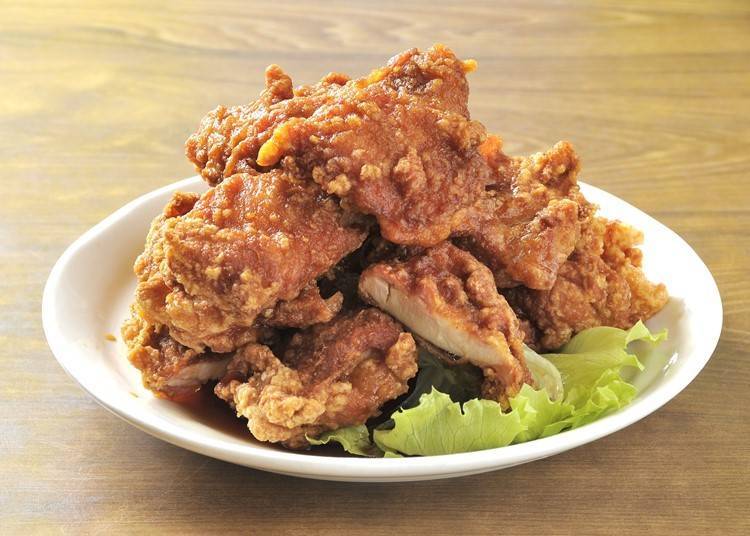
Nambantei, the birthplace of Zantare, is a restaurant located in Kushiro Town, about 20 minutes from Kushiro City by car. It's also near the Kushiro Wetlands, making it an easy place to visit during a sightseeing drive.
You can also walk from Toya Station on the JR Semmo Line (about 2 minutes). However, daily train service is limited, so be sure to check the schedule if planning to visit by train.
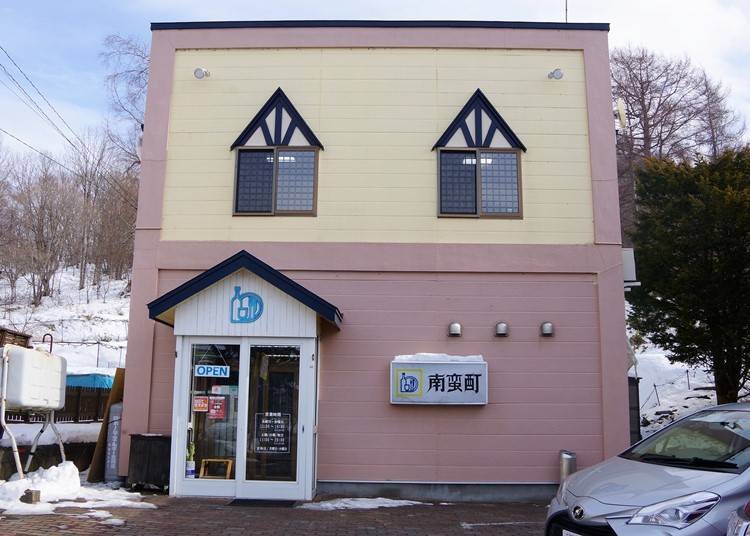
While they offer a variety of set meals and rice bowls, Zantare is the main attraction. About 80% of customers order Zantare as part of a set meal or a la carte. The shop is famous for two reasons: as the birthplace of Zantare, and for dishes too large for one person to eat alone!
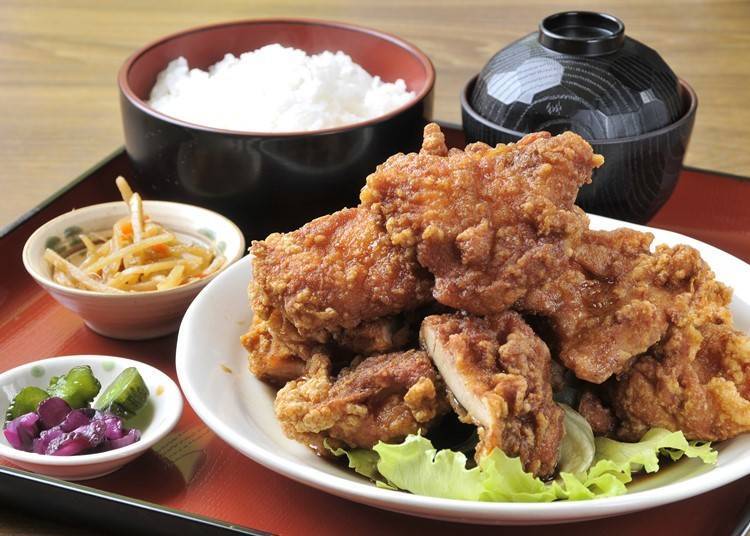
As portion sizes tend to be too large for one person to eat alone, many choose to share a single Zantare dish between two or three friends, together with another set meal or rice. But don't worry if you don't think you can finish the whole thing. Half-size dishes are also available!
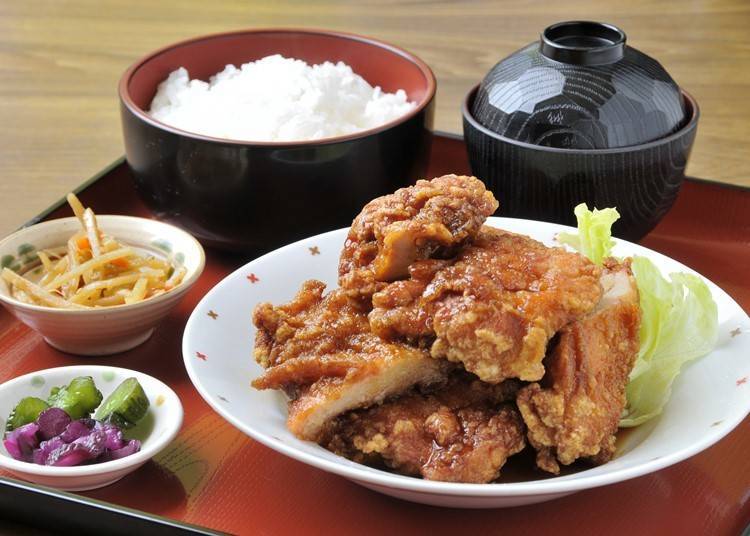
The first thing that hits you once your Zantare arrives is the sweet-and-sour aroma. The vinegar-rich sauce (flavored with soy sauce, sugar, and vinegar) adds a refreshing touch to even the most hearty of fried food dishes. If you want to try something a little different, we also recommend the Karatare.
The Zantare sauce is made with chili and Tabasco, and accented with onion slices. While the chili pepper is spicy enough to feel a tingle on the tip of your tongue, it isn't so spicy that it takes away from the delicious flavor.
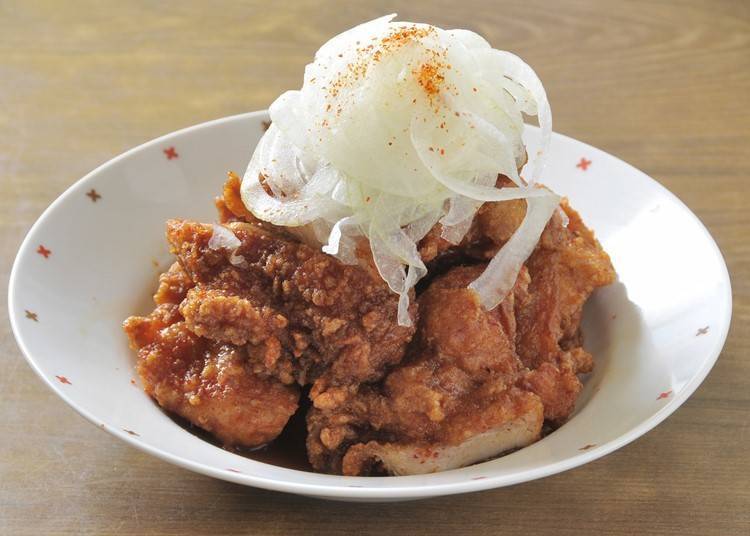
While there are no foreign language menus, you can easily tell whether a dish is regular size, half size, or a set. The regular size is quite voluminous, however, so plan to visit on an empty stomach!
-
Nambantei南蛮酊
- Address 1-39, Toya, Kushiro, Hokkaido 088-2145
- Phone Number 0154-40-3117
・Hours: 11 AM - 9 PM (Last order: 8:30 PM)
・Closed: Mondays, 1st and 3rd Tuesdays (open for national holidays, closed following day)
Famous Shop 3: Sumiyaki Senka Tamadori - Savor the evolution of Zantare!
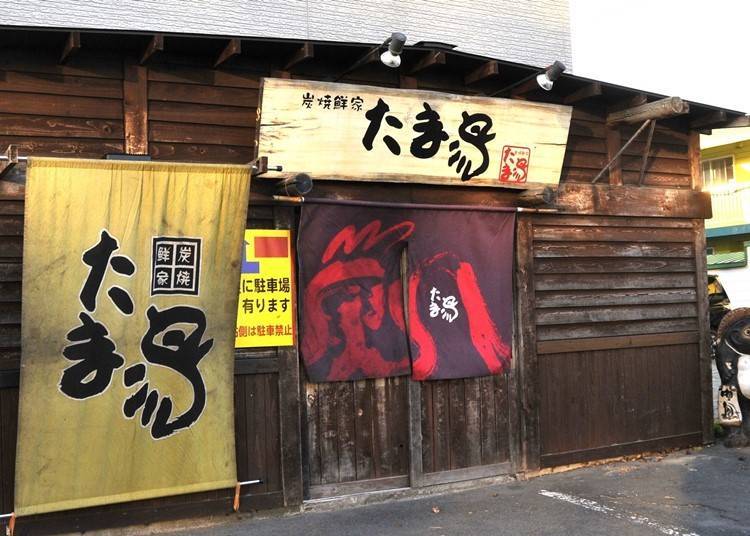
Tamadori, which opened in 1999, is an izakaya that offers skewers, fried foods, and egg dishes. After their Zantare dish won the 2015 Grand Prix in a competition for the best Zantare in Kushiro, this shop gained attention.
One dish you won't want to miss is the Shirotama Zantare (693 yen). This original Zantare dish includes chopped, boiled cabbage and five pieces of Zangi, topped with an original white sauce similar to French dressing.
Even with this dressing-like sauce, it is not too acidic, allowing the sweetness to come through. The flavor is simple, and it pairs well with rice.
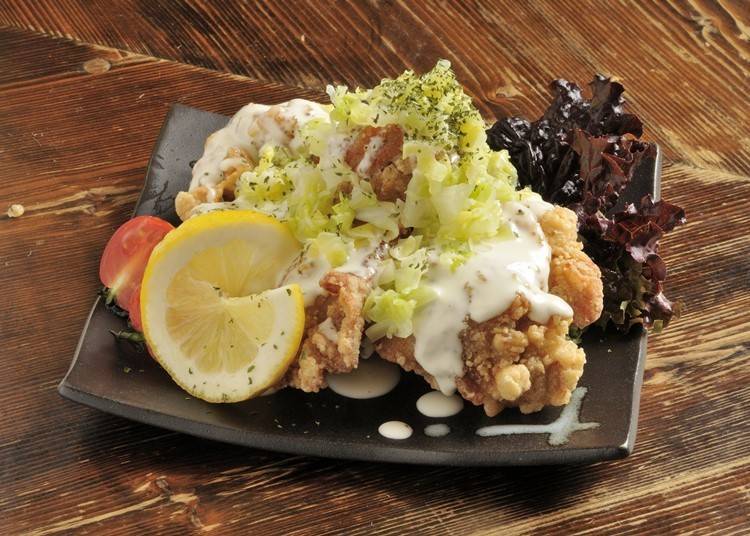
While most fried foods tend to be greasy and make you sluggish, this dish is different. It's easy to eat, and the perfect side dish or sake accompaniment.
Other recommendations are the Kurotama Zantare (693 yen), a Zangi dish kneaded with squid ink and sprinkled with honey mustard, and the regular Zangi dish (605 yen). It's the perfect place for those who want to try a variety of flavors! All of the dishes are available as take-out.
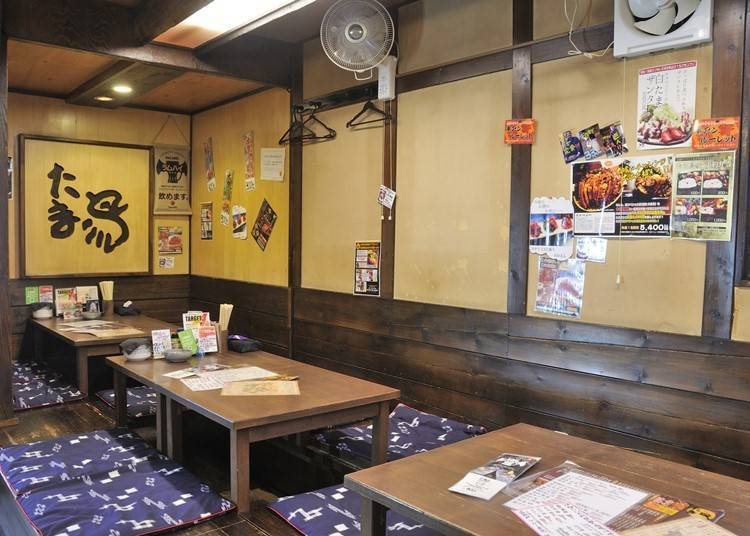
As an izakaya, there are many other great menu items besides Zantare and Zangi, including yakitori, grilled dishes, hot pots, sashimi, and rice bowls. For those who want to experience a variety of Japanese food, this is the place to visit!
-
Sumiyaki Senka Tamadori炭焼鮮家 たま鳥
- Address 12-35, Suinoe, Kushiro, Hokkaido 085-0045
- Phone Number 0154-32-3818
・Hours: 5:30 PM - Midnight
・Closed: Wednesdays
Zangi is a common item in set meal shops and izakayas throughout Hokkaido, and Zantare is derived from that. At first glance, both dishes may seem similar to karaage. So much so that you won't even notice the difference unless you taste it for yourself!
Zangi is a versatile dish that can be enjoyed as both a main course or a companion to sake. For a taste of Hokkaido soul food, and a favorite of the locals, there's no better place to visit than the originating shops!
*Information in article as of March 2022. Please see official website for the latest updates.
Translated by: Krys Suzuki
A travel creator who has traveled all over Hokkaido in search of spectacular scenery and local gourmet food, Nobuka moved to Hokkaido from Tokyo in 2009. Since then, she has continued to photograph and write articles on Hokkaido travel and food for LIVE JAPAN and other tourism websites and travel magazines. She is a certified Hokkaido Tourism Master, a title given to Hokkaido tourism experts by the Hokkaido Chamber of Commerce and Industry, and also holds certifications as a Domestic Travel Service Supervisor and Chief Itinerary Manager. As a transgender person herself, she runs a support group to create an environment that makes travel easier for LGBTQ people, and also gives lectures and talks at universities and companies.
- Area
- Category
*Prices and options mentioned are subject to change.
*Unless stated otherwise, all prices include tax.
Popular Tours & Activitiess
Recommended places for you
-
Appealing

Rukku and Uohei
Izakaya
Sapporo / Chitose
-
Appealing

Odori Park
Parks
Sapporo / Chitose
-
Appealing

Shiroi Koibito Park
Theme Parks
Sapporo / Chitose
-

Farm Tomita
Other Nature
Furano / Biei / Sounkyo
-
Appealing

Mt. Hakodate Observatory
Forests & Mountains
Hakodate
-
Appealing

Otaru Canal
Rivers, Lakes & Canyons
Otaru
-
Ad

Smart Ways to Avoid Crowds and Enjoy a Safe, Comfortable Trip to Otaru.
-

Beyond Hakodate and Matsumae: Enjoy the Hidden Gems of Hokkaido’s Donan Area
-

7 Iconic Hokkaido locations that will make your Instagram shine
by: Himanshi Shah
-

Scenic Road Trip from Hakodate to Matsumae: Stunning Views, Traditions, and Tasty Delights
by: Nobuka Kawashima
-
Ad

Smart Ways to Avoid Crowds and Enjoy a Safe, Comfortable Trip to Noboribetsu Onsen
-

Great Local Eats: 5 Expert-Recommended Local Chain Restaurants in Hakodate
by: Nobuka Kawashima
-

10 Important Japanese Phrases to Know Before You Enter a Japanese Convenience Store!
by: Teni Wada
-

Noboribetsu Onsen: 5 Best Things to Do in Japan's Famous Hot Springs Town!
-

We Ordered Food at This Susukino Restaurant in Sapporo, But We Weren't Expecting What Happened Next!
-

(Video) Walking Tour along Narita Omotesando - Quaint Historical Village near Narita Airport!
by: Victor Gonzalez
-

Japanese Seaweed: All About 6 of Japan’s Most Popular Varieties!
-

Matcha: the Preparation of Japan’s Green Tea Powder
- #best sushi hokkaido
- #things to do hokkaido
- #best ramen sapporo
- #what to bring to japan
- #new years in tokyo
- #what to buy in ameyoko
- #japanese nail trends
- #what to do in odaiba
- #onsen tattoo friendly tokyo
- #daiso
- #best sweets otaru
- #japanese fashion culture
- #best nature furano
- #japanese convenience store snacks
- #best japanese soft drinks














